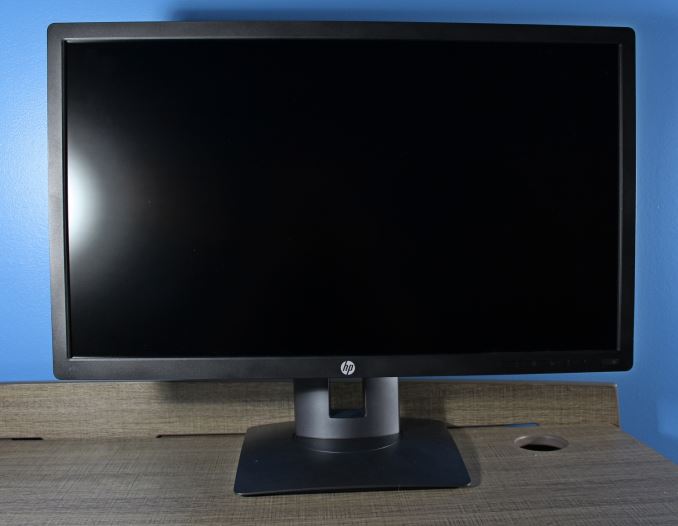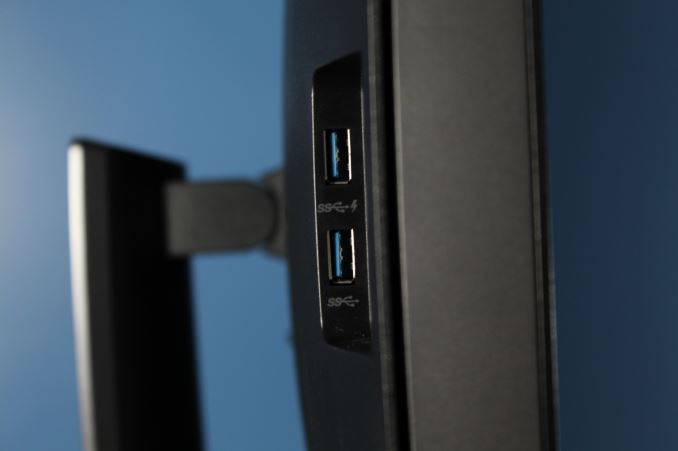HP Z27q Monitor Review: Aiming For More Pixels
by Brett Howse on December 22, 2015 8:00 AM ESTFinal Words
When HP entered the 5K market with the Z27q, the only real competition was the 27-inch Dell 5K display, but it cost close to $2000. HP came into the market with the same display dimensions and resolution, but undercut Dell by almost $800. $1200 for a display is still a lot of money, but if you are someone that needs high resolution, the HP Z27q needs to be considered.
The overall accuracy of the display is great, especially in the AdobeRGB color mode. sRGB does need some calibration of the grayscale and white point to make it practically perfect, but the calibration of the LUT at the factory by HP is quite good resulting in a decent out of the box experience. The one real issue with this display is that the backlight is uneven, dropping as high as 20% from the center when measured at the top left corner. This is pretty much the same issue that we found with the Z27x, and it would not be surprising to find that both monitors are designed similarly. It is the one blemish on an otherwise great performing display.
People looking at 5K displays have to factor in that it takes a lot of GPU power to drive these. You can’t even drive the display with a single cable; instead you have to use two DisplayPort 1.2 ports and cables to achieve the 5120x2880 resolution. This means that the display leverages MST, and while I’ve heard of people having issues with this, I did not have any issues with MST driving this display with an AMD FirePro card in Windows 10. It will still be a while before we have the DisplayPort 1.3 capabilities to drive this with just a single cable.
The construction of the HP Z27q is not going to win any style awards, but it is functional and for most people, a black monitor is all that is needed. The stand is very easy to use though, with lots of options to tilt -5° to +22°, and the swivel is plus or minus 45°.
Due to the nature of the display, input lag was not able to be tested, since the tester used is HDMI and 1080p. In my time with it, there was no noticable lag at the native resolution.
There are not too many people that need almost 15 million pixels, but there are certainly use cases for a display like this. Editing 4K video is an obvious use case, since you can have the entire 4K video in a pixel perfect window, with enough room for toolbars as well. The gamut is a long way from the Z27x offering from HP, but that is only a 2560x1440 panel. Just like the Z27x the one glaring issue is the uniformity. If HP can get on top of this, they will likely have the display to beat, especially at this price.













92 Comments
View All Comments
jbrizz - Tuesday, December 22, 2015 - link
I totally agree. There is no point in pushing technology any further beyond this point. In fact, I might take away all but 640k of your RAM, why would anyone need more than that?Spunjji - Tuesday, December 22, 2015 - link
I don't know if you're using Windows 10 or not, but the DPI scaling is getting very good now.hammer256 - Tuesday, December 22, 2015 - link
Frankly, at ~24" viewing distance, 2560x1440 on 27" works pretty excellently for 1:1. I don't want to sit any closer to my monitors, not comfortable for the eyes. If I was going for 4K, I would want something like a 37". Which is huge. And 3 of them? I'll need a bigger desk. I guess with 4K I can make do with just 2 monitors, but once you go triple monitors, you don't go back ;)geok1ng - Thursday, January 7, 2016 - link
Actually, even 32" is way below the confortable reading limit. Most users complain of the PPI on 24" 256x1440 screens, which have a PPI similar to an hypothetical 34" 4k screen. reading at 1:1 4k is impossible for most users even at the 32" monitors. you can not compare with smartphones screens, because the viewing diustance for smartphones is smaller.MatthiasP - Tuesday, December 22, 2015 - link
It's almost double the price of a 4K display, connects via stopgap MST and doesn't bring much improvement in perceived details at arm's length viewing distance over 4K@27".We 4K display owners are still fine, thank you very much.
quickbunnie - Wednesday, December 30, 2015 - link
Problem is, can you even see 5k resolution at 27 inches and a normal viewing distance? You need to be only 21 inches away for a 4k pixel to take up 1 arc minute, nominally considered the limit of average human vision. At this distance, a 27" display takes up 58.5 degrees of you field of vision, which is very large.Even when editing pixel perfect 1:1 4k video, I'm not sure most people will actually be able to see the extra pixels. If you scoot in and look real close, for sure (which I'm sure many professionals do), but I would say 5k does not automatically mean better for most use cases.
LisaValentin3 - Thursday, December 31, 2015 - link
Prima di poter determinare ciò che schermo è giusto per voi, dobbiamo sapere la vostra situazione. Che cosa hai intenzione di utilizzare il portatile per?<a href=http://schermiportatili.it/hp.html>schermo hp</a>
<a href=http://schermiportatili.it/samsung.html>schermo samsung</a>
gonzo98x - Tuesday, December 22, 2015 - link
What's the deal with the price of this monitor when Samsung can squeeze a 4k display into a 6 inch screen and sell it for far less?Doesn't it take a higher level of specialized technology to cram a 4k resolution into such a small display? To me that would mean a phone display should be more expensive or in the case a 27" monitor should cost less.
So where does the cost come from? Or is this simply another example of setting the price for something 'because they can'. We expect it to be expensive so it is expensive?
I'd love to see a teardown and bill of goods for a monitor such as this.
Insert <thesepricesaretoodamnhigh.jpg>
TheStu - Tuesday, December 22, 2015 - link
I imagine it has something to do with the economies of scale. Whoever is making this panel for HP, they're probably looking at less than 100,000 sales (especially if it is NOT the same panel that's in the 27" iMac). Samsung is going to sell tens of millions of their phone displays.bryanlarsen - Tuesday, December 22, 2015 - link
A 6" display has an area of 15 in^2. A 27" display has an area of over 300 in^2. 20x in size, ~20x in cost, where's the disparity?